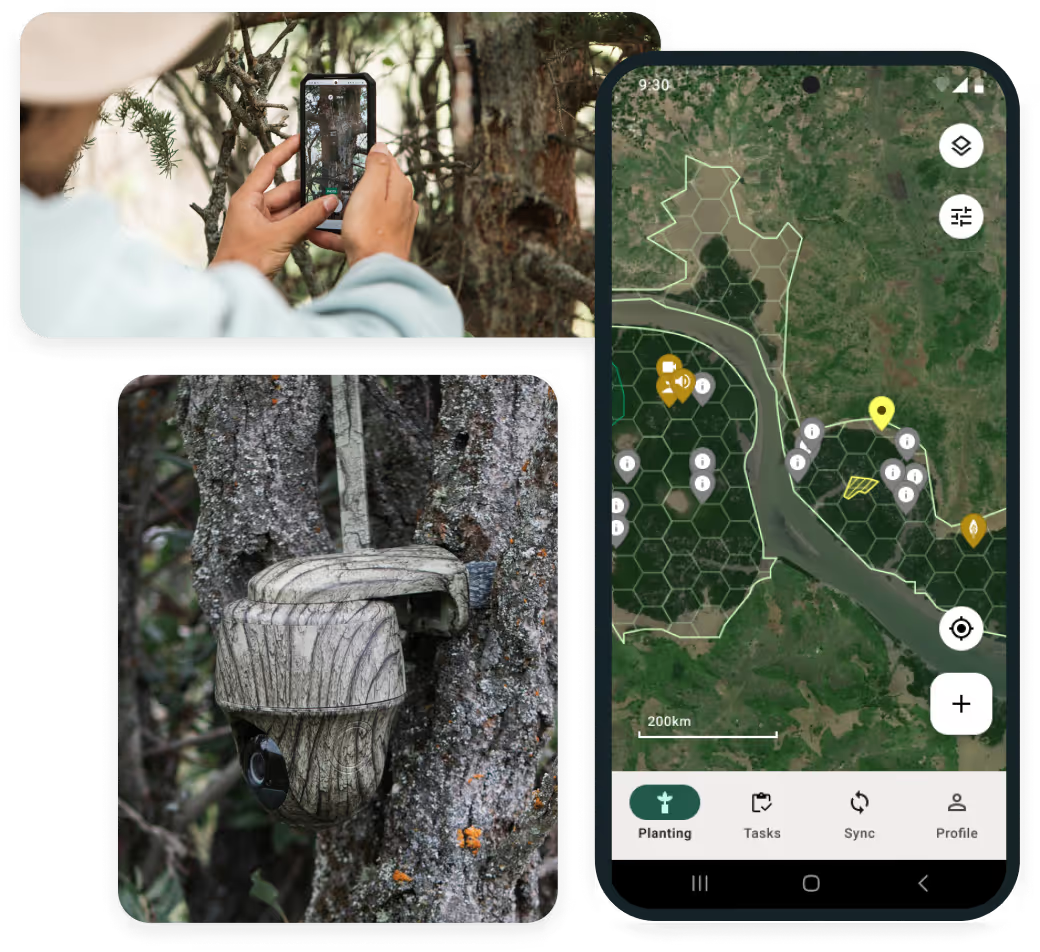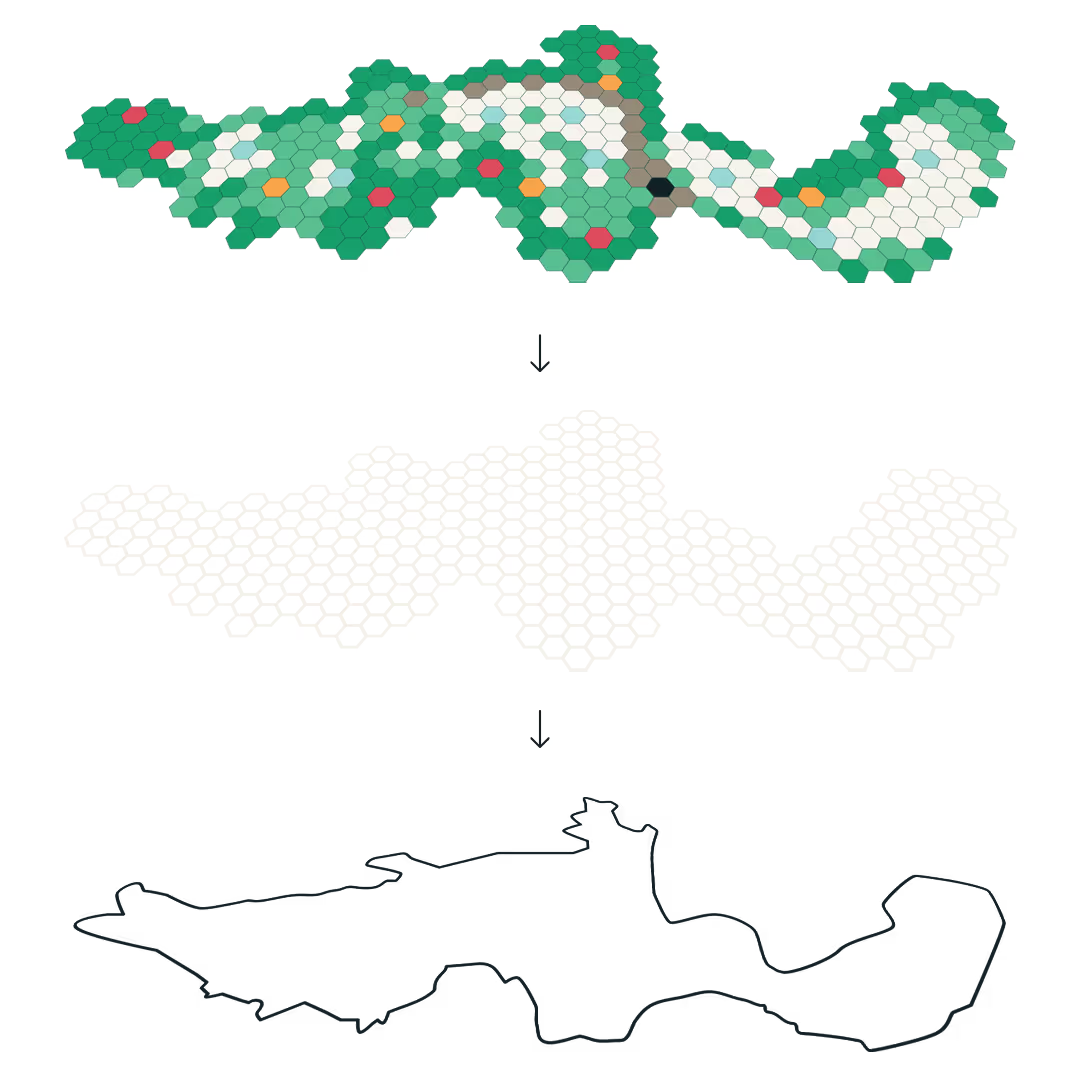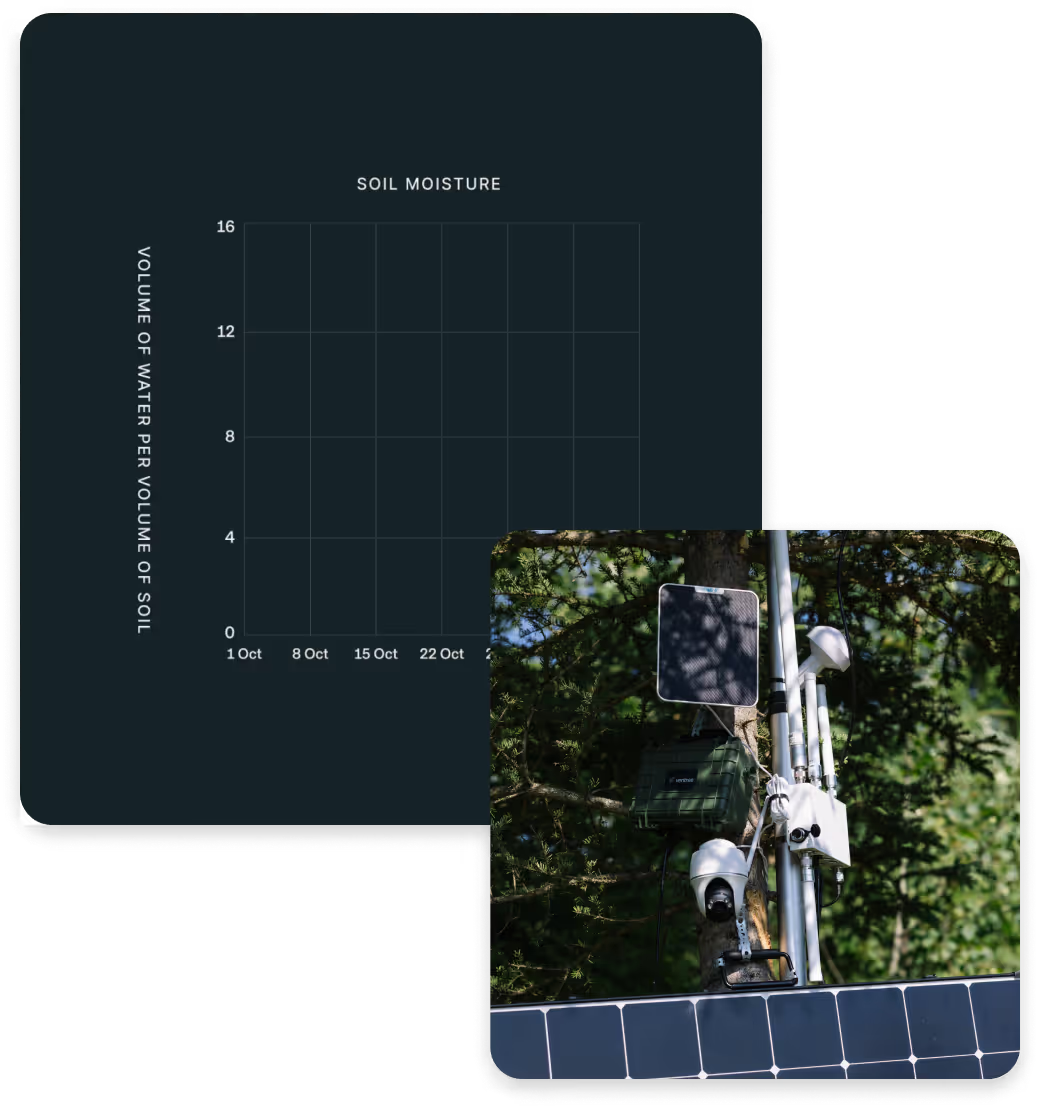Creating Measurable Impact
veritree looks beyond the inputs of tree planting, to the outputs. This means understanding and measuring the outcomes of restoration from changes to water and land, to access to food or socio economic-impact.
Reducing CO2 Levels Helps Mitigate Climate Change
Monitoring carbon in forest restoration is vital as forests act as the planet's lungs, absorbing carbon dioxide and releasing oxygen. By tracking carbon sequestration, we can determine the efficacy of restoration efforts in mitigating climate change. It allows for a quantifiable measure of a forest's contribution to global carbon cycles and offers insights into the potential of forests in offsetting anthropogenic carbon emissions. Furthermore, understanding carbon dynamics can help optimize forest management practices for maximum carbon capture.
Sample data below.
Sample data below.
Below Ground Biomass
0.88
0.77
Above Ground Biomass
0.61
0.27
Our Methodology
We measure carbon sequestration in our reforestation projects using drones, stereoscopic vision, and environmental sensors. This data-driven approach quantifies carbon absorption, giving you tranparency on your climate impact.
Encouraging Growth of Native Species Supports Wildlife
Biodiversity is the foundation of ecosystem resilience and functionality. Monitoring biodiversity ensures that restoration efforts are promoting a rich variety of species and not inadvertently creating monocultures. A biodiverse forest is more resilient to pests, diseases, and changing climatic conditions. Furthermore, each species plays a unique role in the ecosystem, and by monitoring biodiversity, we can better understand and protect these intricate relationships. veritree uses a mixture of technologies to monitor biodiversity including environmental DNA sampling, acoustic monitoring and remote sensing.
Sample data below.
Sample data below.
Below Ground Biomass
0.88
0.77
Above Ground Biomass
0.61
0.27
Our Methodology
We utilize advanced methodologies to deliver transparent biodiversity assessments for our restoration projects. Our bioacoustic monitoring captures wildlife sounds, while trail cameras document species richness and behaviour. Additionally, environmental DNA (eDNA) sampling tracks ecosystem changes.
Job Creation Empowers Communities
People are central to ecosystem restoration. From smallholder farmers to local and Indigenous peoples, to employees in forest enterprises, roughly 1.6 billion people live in and around forests and depend on its natural resources to some extent. Restoration is an opportunity to achieve equity in both rural and urban areas, providing avenues to empower women and young people. Moreover, by promoting and conserving healthy landscapes, restoration can help promote the use of traditional knowledge and protect Indigenous cultural systems and practices.
Sample data below.
Sample data below.
Access to Food
0.88
0.77
Gender Equality
0.61
0.27
Our Methodology
Our socio-economic methodology uses tailored surveys to gather data on community perceptions, engagement levels, and equity impacts, such as access to food, education, and income generated
Rebuilding Natural Habitats Maintain Healthy Ecosystems
Forests play a crucial role in maintaining hydrological cycles. Monitoring water aspects ensures that restored forests are aiding in groundwater recharge, regulating water flows, and maintaining water quality by filtering pollutants. Forests also act as buffers during heavy rainfall, preventing floods and reducing soil erosion. Hence, keeping an eye on water dynamics in and around forests ensures both ecosystem health and human wellbeing.
Sample data below.
Sample data below.
Below Ground Biomass
0.88
0.77
Above Ground Biomass
0.61
0.27
Our Methodology
Our water methodology leverages IoT environmental sensors to monitor and assess water quality and availability. These sensors collect real-time data on key parameters such as soil moisture, rainfall, temperature, and water quality indicators, providing valuable insights into the hydrological conditions of the project.
Boosting Environmental Impact
Monitoring land impacts in forest restoration helps ensure that the restored areas are resilient to degradation, such as soil erosion and desertification. Healthy forests improve soil fertility, structure, and prevent land degradation, promoting a sustainable loop of growth and regeneration. Moreover, tracking land changes can reveal any encroachments or unplanned land-use changes, ensuring that restoration efforts remain undisturbed and effective.
Sample data below.
Sample data below.
Below Ground Biomass
0.88
0.77
Our Methodology
Our land methodology uses remote sensing instruments, soil sampling, water sampling, and IoT sensors to monitor and assess an ecosystem's health. This allows us to capture large-scale land-use changes and vegetation patterns, and provides critical data on water and soil health, enabling us to make informed decisions for land management.
































